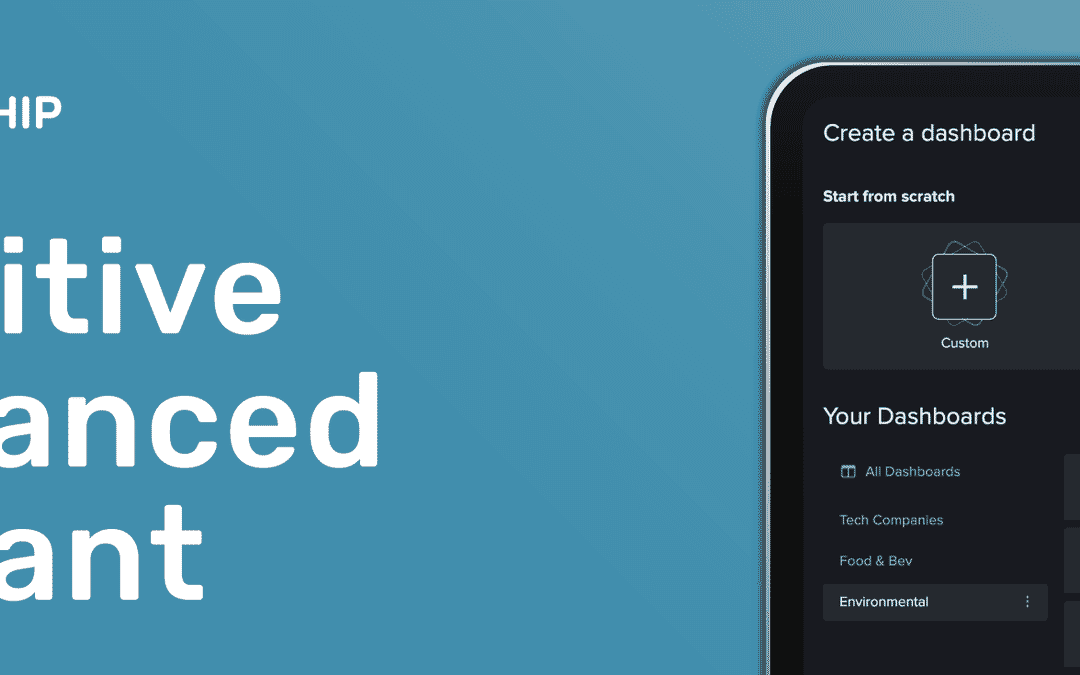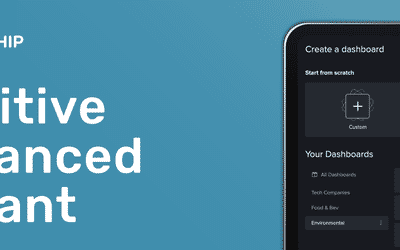Predictive media intelligence describes a set of technologies that enable PR professionals and reporters to predict the impact of news stories, consumer trends, and create optimised content, earned media plans, and content distribution plans.
Predictive media intelligence is possible today due to exponential increases in data and processing power, paired with AI-refined models. It forms part of a wider trend of predictive analytics informing everything from cybersecurity threat detection to food safety.
For comms professionals, this intelligence is arriving at a good time. The media ecosystem seems to have all the predictability of a storm, with reputation threats, crises, and major news events exploding on millions of potential vectors.
But within a storm, there are underlying patterns. Through the right analysis, the chaos yields considerable predictability and confidence for those navigating it. Today, our own predictive intelligence is used by most of the world’s leading newsrooms, all global PR firms, and a fast-growing cohort of global consumer brands and NGOs.
Predictive media intelligence can transform communications work – bringing Google Maps-level confidence to navigating that media storm. This article will describe its main features and give examples of how it guides decision making today. While the edges of this field are nebulous, we will focus on five areas:
- Predictive Media Monitoring
- Predictive Alerts
- Predictive Crisis Management
- Predictive Planning
- The Future of Predictive Media Intelligence
What is Predictive Media Monitoring?
Predictive media monitoring quickly detects newly published news stories, and then predicts their level of impact in the coming hours and days. It’s used by reporters and communications professionals wherever advance knowledge of a story’s impact can assist in a decision – such as a crisis or time sensitive opportunity.
Applications include protecting election integrity in France and enabling the WHO identify exactly which emerging vaccine narratives they need to brief their communications team about. It can inform critical decisions at consumer brands – whether that’s McDonalds understanding the trajectory of public sentiment about political events, or Pepsi spotting real-time cultural trends.
NewsWhip’s technology predicts the impact on social networks, using social network data and machine learning models. These networks include Facebook, used by 68% of US adults, and Twitter, used by 25%.
The process starts by detecting news stories and social media posts as soon as they appear. It notes any story’s source, category, author, topic, and other characteristics, which are used in our database and models. It then gathers engagement data on each story and calculates the rate of change of that engagement. From these calculations, it can show users what engagement to expect on the story in the coming hours.
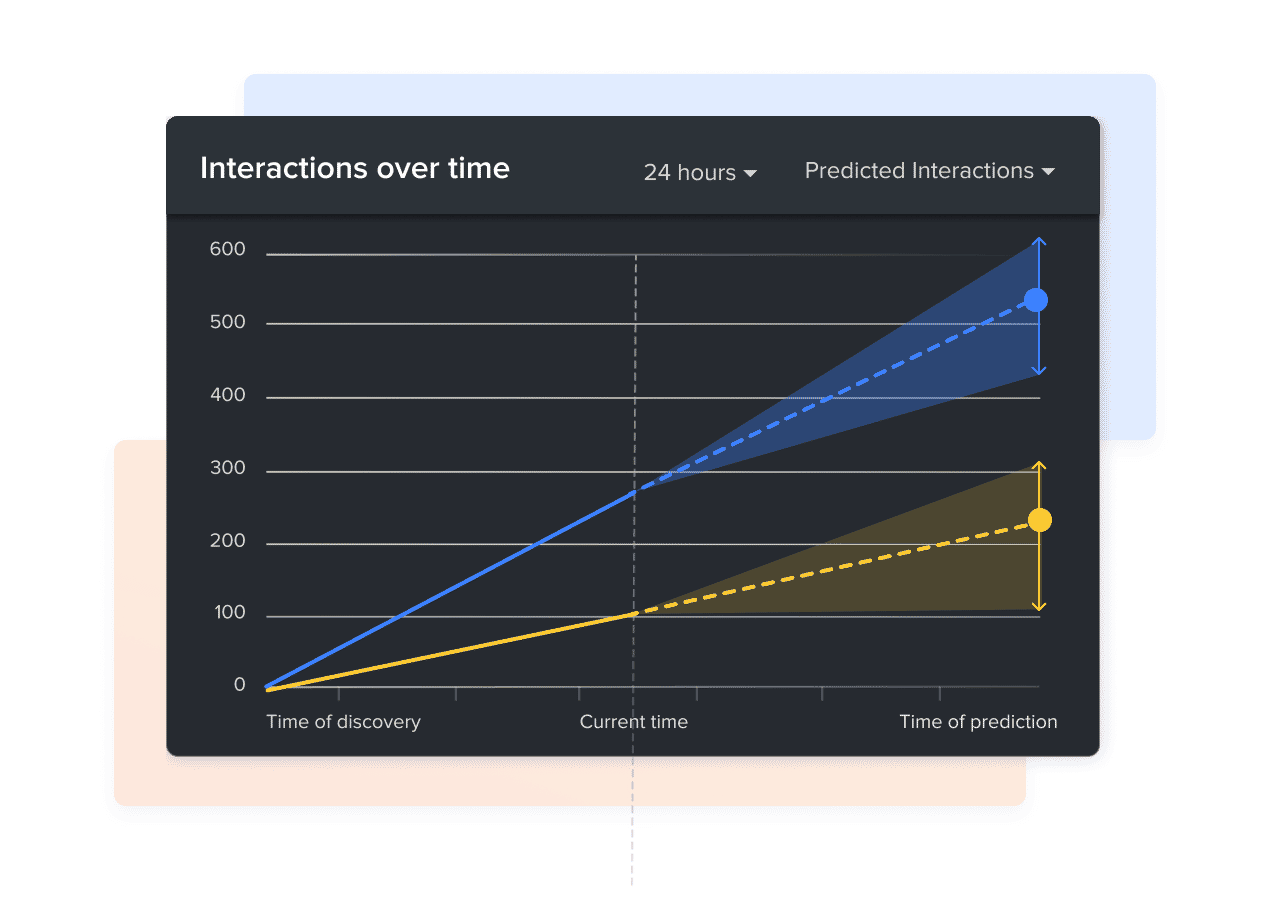
Many stories don’t get much engagement – and the models show that they won’t. In a case like this, a PR advisor might have confident foundations for guiding a low key response.
In other situations, a story might be predicted to grow. A user can see how much, how fast, and also zero in on which specific reports will get traction. From this, they can see which audiences and groups are engaging, and whether the lifespan of a positive story might be extended. Jaclyn Ruelle at the Martin Agency explains:
“We rely on NewsWhip predicted interactions to see if this story is going to die out by this time tomorrow morning… Or if our brand joined the story is it on the brink of being something that could have some staying power and push beyond the 24-hour window?”
Here, Jaclyn might extend a story with another statement, press release, or social post. This, of course, triggers an interesting Heisenberg effect – observing the story and relying on predictions about it can result in taking action – changing the course of the story.
For this reason, predictive models must update continuously – for us, that means quickly accommodating changes such as an unexpected celebrity retweet, or a public statement giving a story new life. We detect these and update predictions within minutes.
Predictive engagement data becomes even more useful for reporters and communicators when combined with other information. We combine and provide relevant discussion across social media, so any story’s arc can be seen alongside the latest Reddit discussion about it, the hottest YouTube takes, and the most engaged Twitter commentary.
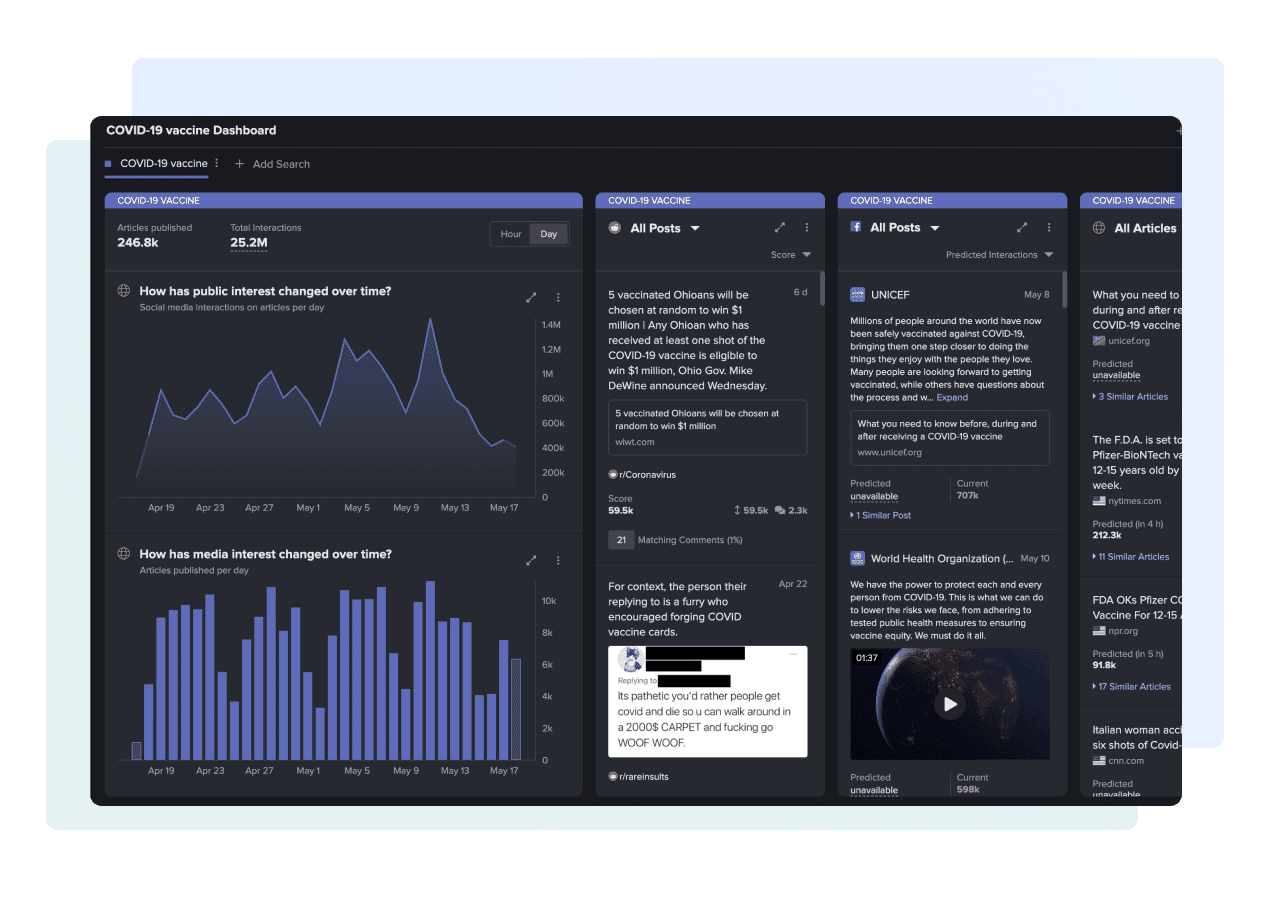
This wider view lets communicators understand how the public is qualitativelytalking about a situation alongside quantitative data on how fast it’s growing, yielding rich insight to guide the right response.
How Do Predictive Alerts work?
Predictive media alerts prompt users when a topic or story is predicted to exceed a threshold level of public interest or engagement, before it has reached that threshold.
To visualise how these work, imagine setting up threshold alerts to ping you whenever a story mentioning Pfizer hits 5,000 social engagements – shares, tweets, or comments.
This gives you the confidence you’ll be alerted to any major stories about Pfizer. The problem? You learn about the stories too late. It’s great to know it’s hit 5,000 shares, but you’d much rather know about the story hours before it hit that threshold.
In this scenario, a user of predictive alerts will be alerted to the story as soon as it is predicted to reach 5,000 shares – even if it was published minutes ago, and has only yet received a hundred engagements. The same algorithms that power predictive monitoring power these alerts.
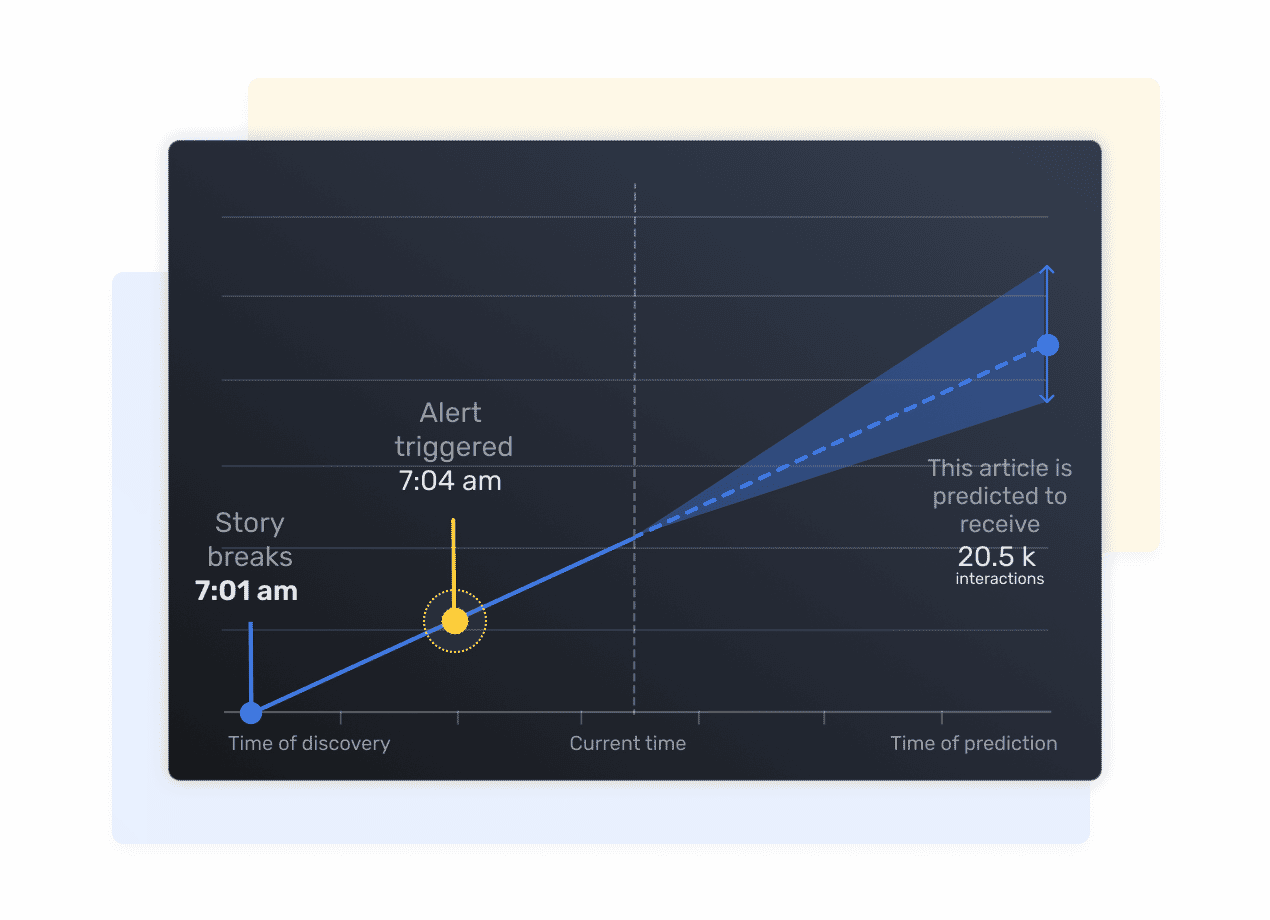
The Predictive alerts we’ve developed in NewsWhip Spike are used across the spectrum by users. Today they:
- Alert NGOs monitoring for misinformation of a breakout new story or narrative
- Alert consumer brands to emergent reputation threats
- Alert communicators to spiking cultural moments for comment – or newsjacking
- Alert journalists to a major story emerging on their beat
The term “predictive alert” is used more widely in PR to describe other situations too – for example, tracking discussion within a group – such as Reddit, or a Twitter list, and spotting when the intensity of that discussion rises to suggest it is likely to break out of the group and into the mainstream.
While this is less automated or precise, it can serve as a good marriage of monitoring skill and high-context knowledge.
What is Predictive Crisis Management?
Predictive Crisis Management is one of the primary applications of predictive monitoring, alerting, and planning. Here, predictive technology is used in real-time to estimate the scale of a crisis, predict its trajectory, and inform the response plan.
In a high-intensity crisis situation, transparent real-time models and monitoring give considerable confidence to advisors and decision-makers. According to Marshall Manson of Brunswick Group:
“We’ve done a lot of work to test NewsWhip predictive analysis, especially in high-pressure situations and we are persuaded that the data is excellent. Certainly at a standard to drive corporate decision making – not just comms.”
Real-time data is very useful for informing response and channels of response. However, historical data can have predictive value too.
For example, if a company is uncertain if an issue amounts to a crisis or not, data from previous issues can be analyzed, to give helpful context, and aid a human prediction about what best action to take.
As Mark Twain said: “History never repeats itself – but it rhymes.” In a crisis situation, our users often check the metrics around the situation with those of previous similar situations to identify underlying patterns.
If a communicator can see that this is an “x-type” issue, not a “y-type” issue, and see how previously “x-type” issues have played out, they can make grounded predictions.
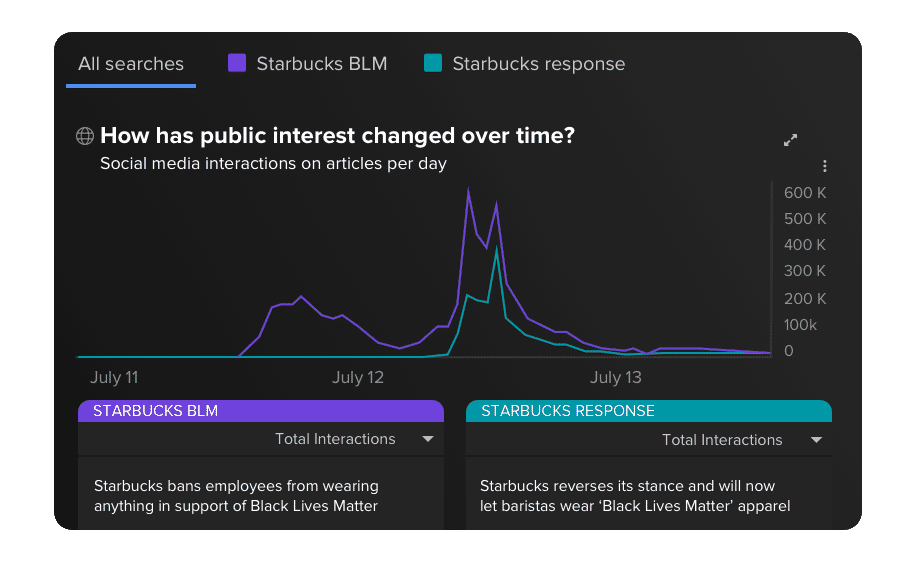
For anyone interested in the “rhyming” media patterns associated with different types of corporate crises – such as legal fights, product recalls, or environmental issues – I recommend this study by the NewsWhip Research Center, which spots the underlying patterns behind different types of media crises.
How do I do Predictive Media Planning?
Predictive media planning involves using big data and computer models to optimize the content strategy, develop the media relations plan or select distribution channels for a message or campaign. Here, analysis of big data strongly suggests, or predicts, that some approaches will work far better than others.
Planning is high-context, smart work. So today’s predictive planning involves users asking smart questions of big data sets from companies like NewsWhip. Predictive planning will evolve substantially in the coming years, as we develop recommendation models to more precisely assist each step in the planning workflow.
Today predictive media planning encompasses a wide expanse of activities including content strategy, media planning, and crisis and issue management.
Predictive Content Strategy
Can you predict if a campaign is going to land? Or more precisely, how it will land in different geographies?
With the right data – and judgment – the answer is yes. For example, when Todd Ringler, Head of US Media at Edelman was tasked with implementing an experimental campaign in 12 cities across the US, he looked at data, and saw that the plan was doomed if it didn’t change:
“We used NewsWhip to go in and audit how this topic was being discussed in various cities’ media. Once we were able to go into each city and come back with insights for how this particular community spoke, how the media spoke about it, which topics rose to the fore around this topic, we were able to go back to the client and say, “Now that we’ve looked at the various cities, we can tell you that this is not going to land well in about 80% of the cities that you want to go into. And we need to dial the program in different directions, depending on if we’re going into Miami or Atlanta or Philadelphia or Dallas.”
“The client was at first a bit dumbfounded that we were able to come up with and prove this with data, not just with our gut and our experience.”
Here Todd’s experience – applied to hard data review – enabled a compelling prediction of the campaign’s impact and a major strategic rethink. This kind of data-rich planning is picking up steam fast in major agencies and consumer brands and is a clear area where technology can assist with direct recommendations as models improve and are tailored to content strategy needs.
Predictive Media Relations
If you’re building a media outreach list for announcing a new product, where do you start? Increasingly, media professionals start with data that predicts which writer will run with their story, and then get the most social amplification on their resulting report.
This prediction of success can be inferred by simply searching for journalists who cover a sub-topic, those who get social engagement on their reports about it, and those who write about it more frequently, yielding a tight media plan. Zach Silber, Chief Innovation Officer at PR Agency Kivvit describes:
“If you are building your media lists using Cision and calling it a day, then you are doing it wrong. NewsWhip data tells us how many social engagements different reporters receive on a particular topic to determine which outreach is most likely to generate the widest engagement.”
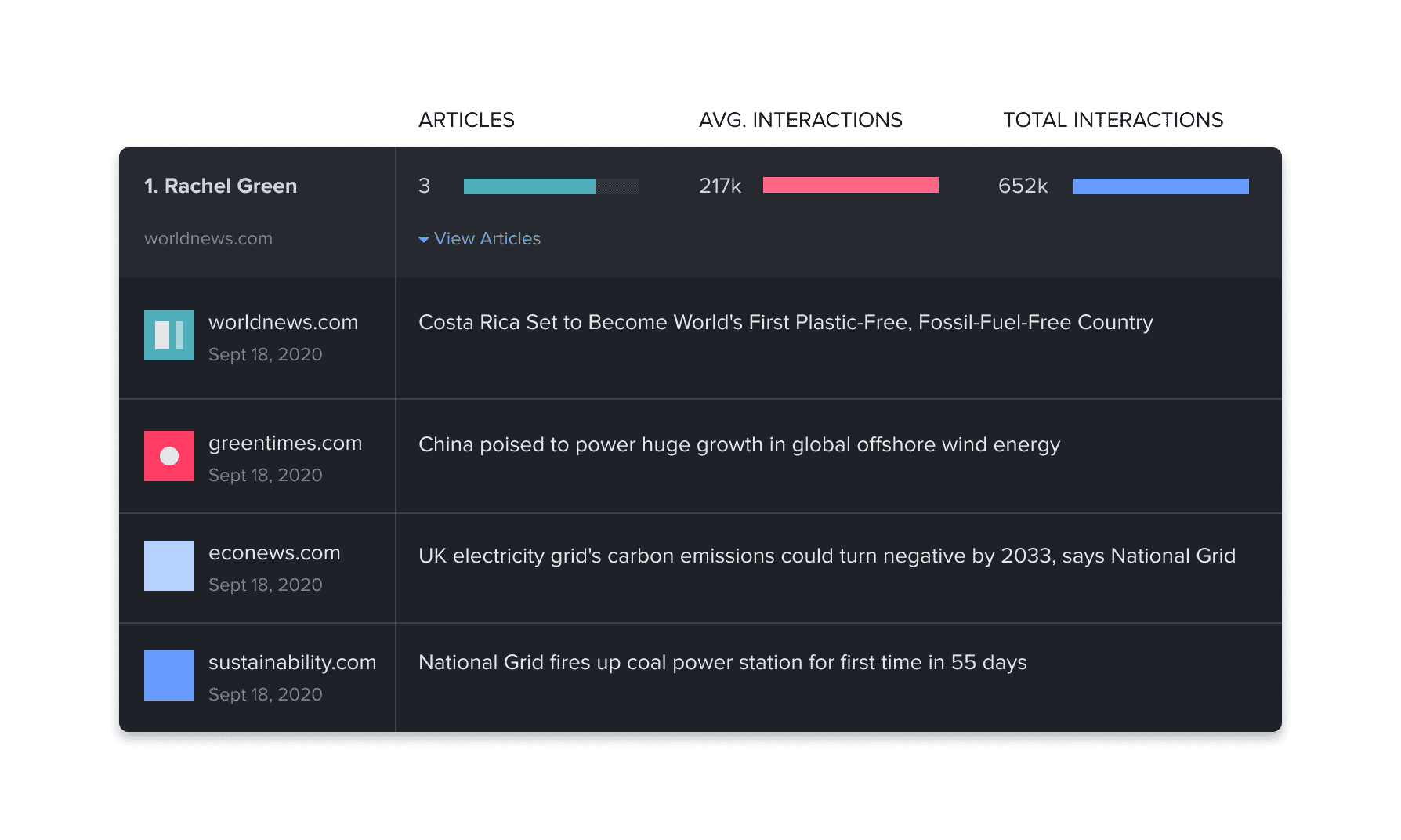
Predictive Trendspotting
Emergent cultural trends may be extrapolated through data. The ballooning interest in cryptocurrencies by mainstream media and investors that’s taking place today involves some peaks and throughs, our data suggest a rising trend in the public interest today. This cultural trend identification and prediction is an area of huge potential, especially as we improve at uncovering the underlying narratives and concepts driving a trend – something AI models are very well suited to doing.
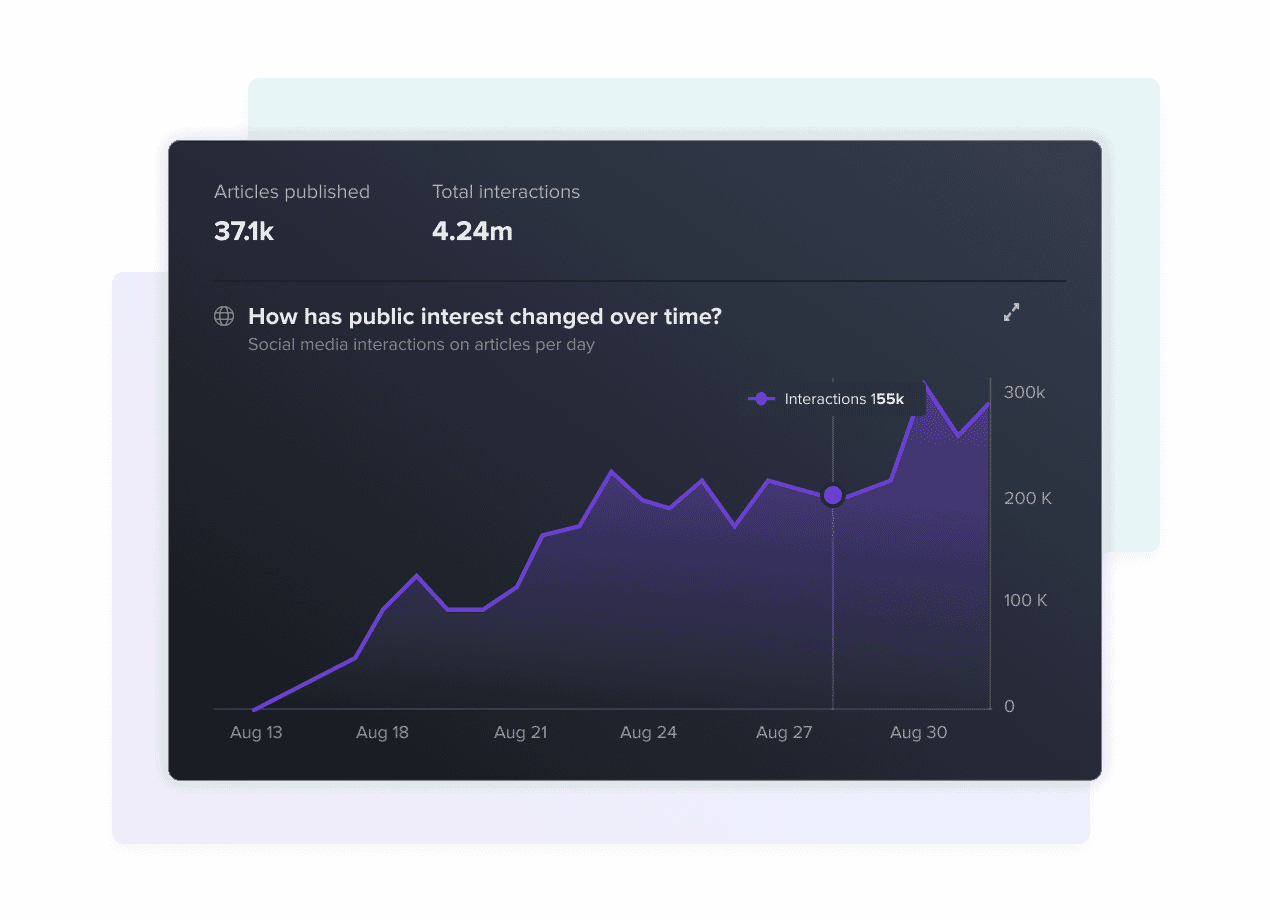
“Using historical engagement data on societal issues such as climate change, reproductive rights, sexual harassment in the workplace, racism, and others … we… can establish benchmarks for how those issues have been engaged with over time and spot when engagement consistently rises above those benchmarks [and] predict “tipping points”.
What’s the future for Predictive Media Intelligence?
Predictive media intelligence will transform as a set of technologies over the 2020s, becoming critical to every element of communications work. As a market, it will become far bigger and more widely used than the legacy media monitoring and social listening technologies that preceded it.
Media monitoring dealt with the output of media – without accurate data on which stories mattered, and without any true means of linking them to news engagement and public influence. Social listening has been focused on customer management and market intelligence with its potential for real-time communications and intelligence neglected.
Today, with billions of social network users, the media landscape is as big and rich as the whole, interconnected, human population. Data from that landscape can be gathered with zero latency, in a fully privacy-compliant manner, and made meaningful immediately to enterprises. And our increasing AI and predictive capability can show exactly “where the puck is going”. This will bring transformative value, as we can track and predict the evolution of news, ideas, and culture as it happens.
For communications professionals, predictive planning will become steadily easier and more effective. This will include automated identification of cultural tipping points and trends relevant to clients, isolating drivers of trends, and smart alerts to items of importance. For journalists, it will bring a picture of the “trends within trends” of consumer interests and political stories.
For planning, AI will take on more of the heavy lifting of evaluating options and optimizing tactics – linking your key concepts with relevant trends, optimal media lists, and engaging distribution strategies.
In predictive monitoring and alerting, we’ll see more automated, explanatory insights. Callouts telling users “why” a story is spiking, and identifying key elements in its trajectory, outlier elements, and associations with other stories.
Predictive media intelligence will also bring challenges. Like any system, it will be limited by and shaped by its inputs. By tracking social media and media and viewing it as representative of the world, we may over-index on the noisiest or most emotional expressions of behavior.
Professionals must not lose sight of precisely what it is their predictions are based on, and builders like us must stay aware of our limitations – and of the wider questions around potential biases in AI training, and ethical use of AI.
The new media ecosystem throws up many challenges for the modern communicator. But it also presents a remarkable opportunity to greatly extend their reach and impact. The 2020s will be interesting times indeed.
To learn more about predictive media intelligence, here’s more on our Spike platform. Or if you’d like to chat or have questions, please request a demo, or say hi at hello@newswhip.com.






